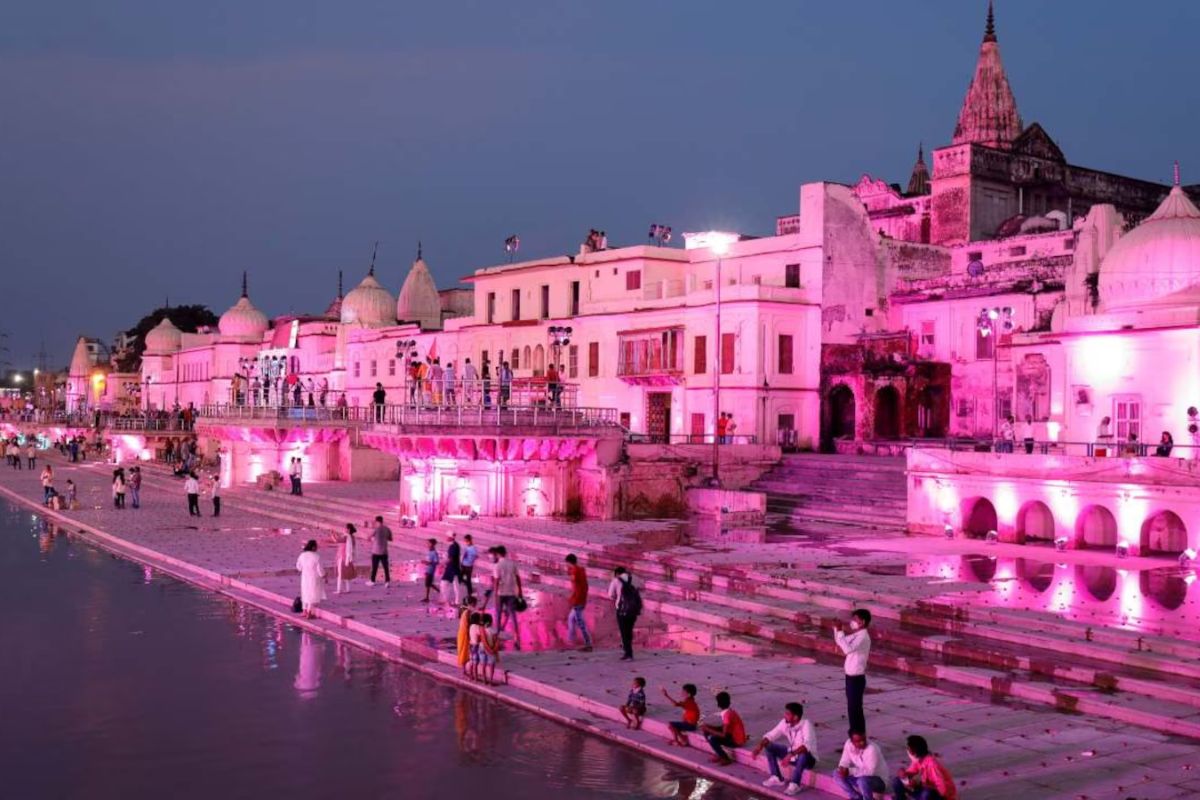Deepotsav ushers Ayodhya into Guiness Book of World Records on two counts
Ayodhya has set two milestones on Wednesday during Deepotsav 2024 after Lord Ram was enshrined in his birthpalace after 500 years of wait.
This positive impact will extend beyond Ayodhya, benefiting cities such as Lucknow, Kanpur, Prayagraj, Varanasi, and Gorakhpur.

The cultural development of Ayodhya is expected to stimulate growth in the hospitality sector leading to a substantial increase in employment opportunities in Uttar Pradesh in a big way.
This positive impact will extend beyond Ayodhya, benefiting cities such as Lucknow, Kanpur, Prayagraj, Varanasi, and Gorakhpur.
The number of people searching for Ayodhya on social media has increased by about a thousand per cent in the past few years. These figures raise hopes in the hospitality and related sectors.
Advertisement
People associated with this industry estimate that in the coming years, Ayodhya will be among the top destinations for tourists/devotees, considering the regular influx.
Currently, Tirupati Balaji, which is counted among the most prosperous temples of the country, holds the top position in this regard. Around 50,000 tourists/devotees visit there every day. On special occasions or holidays, this number reaches close to one lakh.
Yogi Adityanath’s focus on the development of Ayodhya since becoming the chief minister, particularly through initiatives and events like Deepotsav, has attracted the attention of the country and the world. The number of tourists/devotees visiting Ayodhya has consistently increased.
As per the Tourism Department’s statistics, till 2017, approximately two lakh tourists/devotees visited Ayodhya every year. Now, this number has increased to two crore. It is estimated that in the next few years, the hospitality industry will provide employment to 20,000 to 25,000 people every year.
According to Mukesh Meshram, Principal Secretary of UP Tourism Department, approximately three lakh tourists/devotees are expected to visit Ayodhya every day by 2030. Those associated with the hotel industry estimate that in the weeks following the consecration ceremony on January 22, this number could range from three to six to seven lakh. For those who wish to stay, there will be a need for facilities such as hotels, motels, restaurants, and transportation in Ayodhya, depending on their spending power.
Presently, almost all the brands associated with the hotel industry have shown interest in Ayodhya. Many of them have acquired land, and construction work is underway for some. Others are in a wait-and-watch situation. After the consecration ceremony, they will decide on the nature of their properties based on the number of tourists/devotees visiting and their purchasing capacity.
To attract investors in this sector in the state, the Yogi government is considering giving some more relaxations in the construction of hotels in major cities of the state, including Ayodhya, Lucknow, and Varanasi. A seven-member committee has been formed in this regard. The committee could suggest removal of some complexities related to builders’ bylaws.
CM Yogi himself took notice of these complexities. It is hoped that the committee can provide suggestions, such as reducing the cost of map fee, standardizing the width of land and roads for construction, etc.
According to Bhavya Malhotra, former banquet manager at ITC Maurya, New Delhi, the ideal situation for any hotel is to have three service providers per room. This includes departments like the front office, housekeeping, food and beverage, laundry, finance, human resources, horticulture, sales, etc. If the property is small and some departments are missing, the number of service providers could be slightly less, but there should still be at least two employees per room. Having fewer than this could result in not providing satisfactory service to customers.
Notably, the increase in the number of tourists/devotees will benefit not only the hotel industry but also sectors related to aviation, railways, road transport corporations, and logistics.
Advertisement